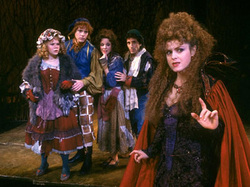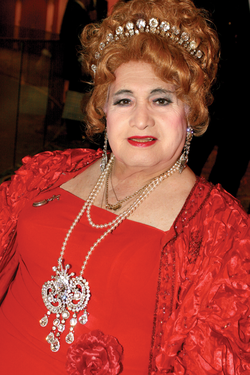
In my line of work, I get to meet people from many walks of life, backgrounds and sexual orientations. Because I work for an HIV Services Organization and facilitate one of their weekly support groups, friends of mine often ask me for advice, so I often hear stories and experiences of a very personal nature. This is one of them.
“Jack” (duh, not his real name) takes relatively good care of himself. He is middle aged, sexually active, employed and has health and prescription benefits. He sees his doctor, follows instructions and recommendations, and tries to keep ahead of any ongoing health concerns.
A little over two years ago, he tested positive for syphilis. This caught him by surprise because he was totally asymptomatic. His doctor gave him a prescription for bicillin, a strong penicillin antibiotic suspended in an injectable form. He was to pick it up and bring it back to the doctor for an injection, and then do it again in each of the succeeding weeks. When he first went to pick up the prescription, he was astonished that the cost or each dose was in excess of $160: his insurance didn’t cover it. Although penicillin is a basic and generic drug, apparently the insurance gods decided it wasn’t worth covering this particular formula. Jack paid for the first dose and took it to his doctor, but confessed that he couldn’t afford two more co-pays. His doctor told him that he could get the shot for free at the NYC Department of Health STD clinics, and wrote up a detailed prescription and note, complete with test results and other information.
Jack took it to the Department of Health clinic in Chelsea, where the doctor’s report to them meant very little and they ran him through a battery of questions themselves, and based on some of his answers, even made him speak to a harm reduction counselor for excessive drinking. (apparently 3 cocktails twice a week is excessive.) After an hour and a half, he saw a doctor who gave him the injection, along with a hardy dose of good Christian judgment about the behaviors that led him to contracting syphilis in the first place. More than two hours later, he left, sore, but understanding that he had to return and do it all again the following week.
Flash forward 18 months to his next physical. His numbers had improved from 1:128 down to 1:1, which is what you would expect from someone who had been treated properly. All was good. Nine months later, however, the test showed 1:4…syphilis antibodies were detectable again, but at this low level, his doctor thought a single dose of bicillin would be enough. Knowing that the insurance company wouldn’t pay, Jack reminded his doctor that he could go to the DOH and they agreed that this would work.
However, at a different branch of the DOH, Jack was subjected to even more judgment than he had been previously. Not only did he have a caseworker asking to have a full list of every sexual contact Jack had ever had (impossible with the rise of apps like Grindr and Tinder), but started lecturing him on how serious syphilis was and the impact of the epidemic. Rather than treating him like an adult who WAS keeping on top of his own healthcare and being proactive when something developed, this case manager was making him feel like a child who was being naughty and dirty. Jack’s patience was at an end and he was, admittedly, not very pleasant himself. This led to a conversation between the caseworker and the doctor, who was the same judgmental doctor Jack had seen two years previously…and they both recognized each other. The doctor greeted him with a “Back again?” question and proceeded to go through a battery of questions and tests and examinations. The process took two hours and was ultimately frustrating and humiliating for him, but he left with the single dose that both his private physician and the DOH doctor deemed appropriate for the treatment.
Three months later, in January of 2015, his test number was still at 1:4. Not worse, but not better. However, given the experience at the DOH in November, he was not interested in running their gauntlet for three weeks in a row.
His doctor suggested that they might be able to order the medicine to be delivered to his office, and then work it as an office procedure, and the pharmacy agreed to that: with a $670 payment, no savings over purchasing it at the pharmacy. The insurance company disagreed with the pharmacy: this wasn’t a hospital ordering, this was a doctor’s office, so they’d charge $70, the same cost for a specialist office visit. That also seemed hopelessly random, but the other treatment solution was a two week run of a powerful oral antibiotic that had given Jack incapacitating nausea when it had been prescribed for a different ailment twenty years earlier. More than two hours of time on the phone back and forth between the doctor, the pharmacy and the insurance company, with more reference numbers and dollar amounts than could be easily kept track of and Jack was exhausted: finally, the solution was clear and they were just waiting for final confirmations to have everything fall into place. Plus a $70 medicine co-pay, and three $40 office visits later.
Jack is educated, middle class, employed and has insurance and pharmacy coverage. In order to get treated for a common STD, he will be spending $190 out of pocket, plus the time and energy of working/fighting with three different offices to make this happen. He has never shown a symptom of syphilis.
If this process is so difficult and time consuming, so emotionally draining and humiliating for him, he also remembers that he must have it a lot easier than folks without insurance, or folks without doctors who are willing to fight insurance companies or think creatively.
And that, my friends, is why we’re having a new epidemic of syphilis. Not because people are being naughty or dirty (come on, it’s been around for thousands of years – a curable STD is part of the cost of sexual activity, and it only takes once.)
We need to simplify the treatment process, destigmatize the counseling process, reduce the costs on basic drugs, and not treat proactive patients like they’ve done anything wrong.
Until we do that, we’re going to be keeping people away from treatment by making it to expensive, too exhausting and too maddening to navigate the process.






 RSS Feed
RSS Feed